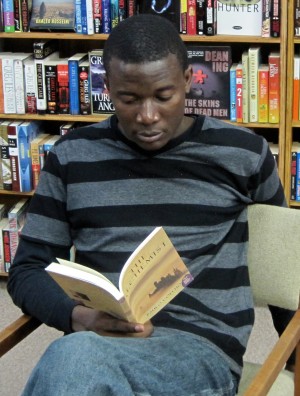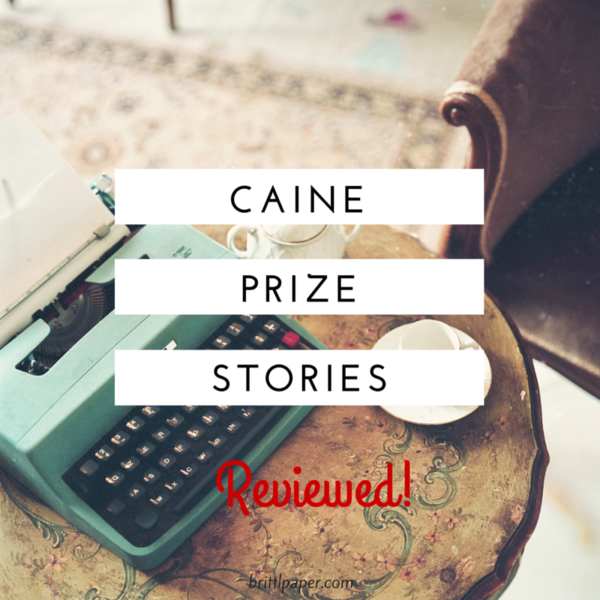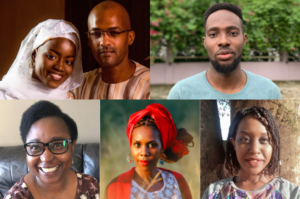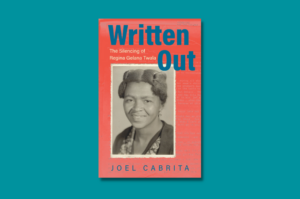There are many threads in Tope Folarin’s Caine Prize-shortlisted story “Genesis,” each of them tying the story together in some way or the other. It is a sad and moving story. Like “Miracle,” his Caine-Prize winning entry from 2013, this new story has elements of faith and disbelief, strands about family and loss, and a strong component of a childlike naivety about the goodness of man and the power of miracles. However, unlike that other story—and this is important—this story is nakedly autobiographical.
It begins (spoiler alert) with an encounter with a self-unaware racist elderly woman to whom a young Nigerian child is nothing but a potential servant in the afterlife where she at least deigns to permit him the prospect of entry at the end of their time on earth. Welcome to Ogen, Utah where the character was born, in 1981, and raised by two immigrant parents from Nigeria. We are later introduced to them as a young couple who discovered—like most—that the reality of America is different from their expectations gleaned from media portrayals. Here in the cold mountains of Utah, to add insult to injury, they were in a racial minority. We are also introduced to other dimensions of the character and his family, from loving and joyful as most childhood memories are to dark and disturbing: his mother develops (or begins to show signs of) mental illness, then violence and instability. This leads first to a temporary split in the family: his mother’s growing mental illness, her separation from his father through devious means, his (and his brother’s) life in a homeless shelter, the family’s temporary reconciliation and shared custody, the mother’s attempted suicide, then a divorce, and the mother’s deportation (or return) to Nigeria where she would be for the rest of the story.
There are, I now realize, elements of autobiography in Miracle, hiding in plain sight all along. The protagonist came from a pentecostal Nigerian family growing up in Texas (where Folarin himself was raised). Both of them have difficulty seeing (Folarin uses glasses). The character had a brother, and the main character notes at some point during the “healing” process that defines the story that one of the little miracles he was thankful for was having his family stay together “despite the terror of my mother’s abrupt departure.” All those, at the time, read like moving and well-written recollections that perfectly fit the life of this fictional young Nigerian-American character living in Texas. The autobiographical elements were either ignored or tolerated in the understanding that fiction is sometimes truer than reality, or that the fact didn’t remove from the universality and beauty of that story, which is a fact. My review of the story, and a subsequent interview with the author, certainly didn’t think of that angle as worth paying attention to or bringing up.
Tope Folarin himself, however, heard more than a few insinuations that the story didn’t deserve being classified as fiction because of the closeness of the story to reality. I know that now, reading a few of the interviews he gave in 2013 in which he defends using autobiographical elements as a way to tell an even larger story. Here is an excerpt from his conversation with Aaron Bady:
“It certainly is autobiographical, I’m not going to claim it’s not. But I’ve discovered that even if I start with an autobiographical premise—yes, I was born in raised in Utah, yes, I went to high school in Texas—the moment I sit and attempt to pin down these ideas, it becomes something different. If a reader is reading my work, and they say “Now I know all there is to know about Tope, or “Ta-peh,” because of what I’ve read,” that would be inaccurate. I’m trying my best to tell a very particular story about identity that, in some ways, is similar to mine, and in some ways isn’t.”
Ainehi Edoro was even more direct in this interview: “Is the story (Miracle) biographical in any way?” she asked. “Not particularly,” he responded and continued:
“Have I participated in my fair share of miracle healing services? Yes. Was there even a moment when I might have done what the young boy does in my story, when I ‘performed’ a miracle for the benefit of the congregation? Yes. This incident, however, merely serves as the germ of a story that has its own concerns and aspirations, separate from this comic episode in my own life.”
And as conceded above, the strength and universality of “Miracle” combined with the relative distance of the readers from the author’s biographical trajectory helped sustain the illusion of the story as a gemstone of fiction, elevating a notable common experience through the viewpoint of a character into a universal story. This characteristic however returns in this new story, “Genesis,” but we’re forced to take a second look. We no longer receive it as fresh or dynamic not due to any negligence, poor writing skills or a lack of suspense per se, but because of our own exposure to more of the author’s background is sufficient to make us skeptical of any further claim of the work’s divorce from a lived experience.
When approached as non-fiction, however, the strength of the work is better appreciated along with the writer’s diligent retelling. Aké: Years of Childhood by Wole Soyinka is a wonderful work of literature, taking the reader on a delightful tour of an earlier time through the eyes of a young Yorùbá child of precocious tendencies. But it is non-fiction, which doesn’t make it any less brilliant, but just unqualified for a competition judging the best short story, defined as a piece of prose fiction.
“Genesis” is sad and affecting read more so because now we know that it is real.
Here, again, is where I return to the problem of approaching the story as fiction where everything points to a true portrayal of a challenging, yet triumphant, personal story. Where do we place deserving credit? With the author’s power of recall or at the foot of his successful utilization of literary gifts in conflating true reality with fictive verisimilitude? “Folarin says he was the first black child to attend his Utah elementary school and recalls the day when a white classmate tried to wipe off Folarin’s dark skin color. When his skin color did not change, the classmate declared Folarin dirty,” the Washington Post reported in July, 2013. In “Genesis”, the character recounts the same story:
“On the playground all my classmates asked if they could touch my hair. I said OK. Then Simon rubbed my skin and ran away crying to the playground attendant.
“It won’t come off!” he wailed. “Why won’t it come off?”
A few days later I asked my father why my hair was so kinky, and why I couldn’t wash off the brown off my skin. He began talking about the importance of pride, the meaning of self-respect, but I didn’t fully understand what he was saying.
As he spoke, I thought about the old lady I’d met on my way to school.
To return to how the writer defines his style, it is fair to say that both “Genesis” and “Miracle” were non-fiction autobiographical stories from the start. And there’s nothing wrong with that (although the author should have been less evasive when asked). Autobiographical stories, even though defined as non-fiction, are allowed a liberal dose of fictionalized retelling in order to steer the story in a particular direction. I return to Aké (and any of Maya Angelou’s autobiographical “fictions”) as an example of this, where memory and distance from the events recounted forces the author to find new ways of expressing what is a central idea hidden in one memorable childhood recollection. The extent of the fictionalization is left to the author. Left to the reader, however, is also the task of finding out just how much of what is already in the public domain is repeated and retold, and how well. The pleasure is in the retelling, but not in the story itself.
In any case, “Genesis”—the story as fiction—is not dynamic enough to be redeemed by any element of style. As non-fiction, however, it is a triumphant account and a worthy addition to the treasure trove of African migrant autobiographical literature, with an ending so satisfying and so public: the character grows out of Utah, moves to Texas at age 14, becomes a Rhodes Scholar, gets Oprah Winfrey’s sponsorship, and wins the Caine Prize in 2013, putting his face, finally, on the literary map. And in November of that same year, he returns to Abeokuta to reunite with his mother and piece together the other parts of his life story that the distance of America and childhood memory took away.
The author says that “Miracle” came from an ongoing work called The Proximity of Distance. I believe that “Genesis” did too, occupying an earlier time in the story and giving us a clearer view of the writer’s earliest influences. It would be nice to read that book when it’s ready, but in one whole piece this time.
Maybe the Caine Prize should explicitly begin to reward African writers who write non-fiction memoirs and autobiographies. Call it The Caine Prize for African Literature, if you will. (If not, then it should explicitly say so and exclude erring entries). But since “Miracle” won the prize in 2013 and “Genesis” is on the short list today, maybe it already does!
*********
About the Author:
 Kọ́lá Túbọ̀sún is the author of the chapbook Attempted Speech & Other Fatherhood Poems (Saraba, 2015). He works in Lagos as a linguist and can be found on twitter at @baroka, on his blog at KTravula.com, or at YorubaName.com where he’s curating a multimedia dictionary of Yorùbá names. In partnership with the Invisible Borders project, Tubosun is interviewing all the participants on the trip. Previous interviews can be found here and here.
Kọ́lá Túbọ̀sún is the author of the chapbook Attempted Speech & Other Fatherhood Poems (Saraba, 2015). He works in Lagos as a linguist and can be found on twitter at @baroka, on his blog at KTravula.com, or at YorubaName.com where he’s curating a multimedia dictionary of Yorùbá names. In partnership with the Invisible Borders project, Tubosun is interviewing all the participants on the trip. Previous interviews can be found here and here.










Caine Prize 2016 | A Boy's Tale of Silence: Review of Tope Folarin’s 'Genesis' by Ife Olujuyigbe. - Writivision June 21, 2016 19:11
[…] Genesis a prize worthy story? Absolutely. Is it Caine-Prize worthy? Arguably. While there is a school of thought that Genesis falls into the ‘Biography category’ which is expressly stated in the rules as not allowed (Kola Tubosun, in his review, describes […]